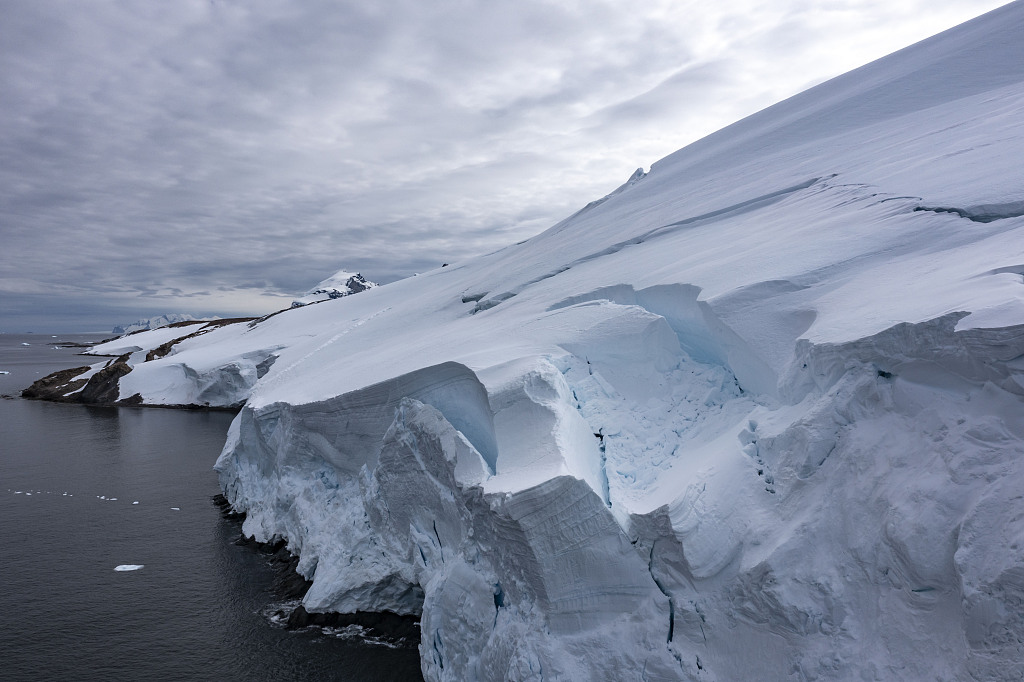
The glaciers on Horseshoe Island are seen as the floes melt due to global climate change in Antarctica, February 16, 2022. /CFP
The glaciers on Horseshoe Island are seen as the floes melt due to global climate change in Antarctica, February 16, 2022. /CFP
Antarctic sea ice has likely reached its minimum extent for the year, according to a recent study of the U.S. National Snow and Ice Data Center (NSIDC).
On February 21, Antarctic sea ice likely reached its annual minimum extent of 1.79 million square kilometers, the lowest in the 45-year satellite record, NSIDC data showed.
This year marks a second consecutive record low in Antarctic sea ice extent. In recent years, 2017 and 2018 also reached very low extents, third and fourth lowest, respectively, according to the NSIDC.
"Antarctica's response to climate change has been different from the Arctic's," said Ted Scambos, senior research scientist at the Cooperative Institute for Research in the Environmental Sciences at the University of Colorado Boulder.
"The downward trend in sea ice may be a signal that global warming is finally affecting the floating ice around Antarctica, but it will take several more years to be confident of it," he said.
Lower sea ice extent means that ocean waves will pound the coast of the giant ice sheet, further reducing ice shelves around Antarctica, according to Scambos.
NSIDC scientists stressed that the Antarctic sea ice extent number is preliminary. Changing winds or late-season melt could still push the ice extent lower.
(If you want to contribute and have specific expertise, please contact us at nature@cgtn.com.)
Source(s): Xinhua News Agency